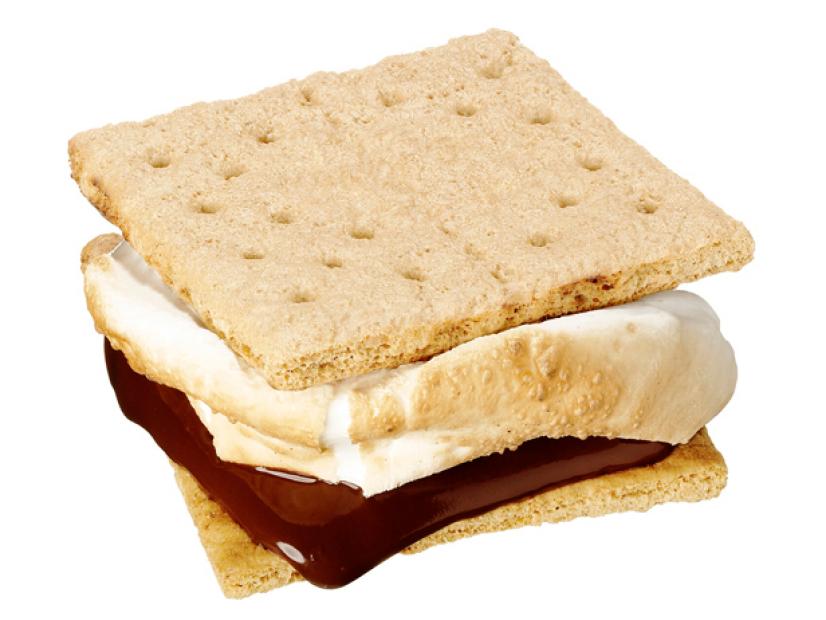Part of our chemistry class, in term three, we learn about chemical reactions and determine bonds types. When we learned about determine bonds type, everyone in the class perceives the information quickly — because of our teacher! When it comes to chemical reaction and calculating excess reactant or limited reactant, most of us was froze. However our facilitator, Ellie, assigned us to do a lab where the product is s’mores. From that lab we need to calculate the limited reactants and the excess reactant. For me, I learn each ingredient of s’mores and I can implement it into the actual chemical. I better understand of calculating chemical reaction better than just learning it theoretically.

Lab Report
Problem: Given a certain quantity of marshmallows, graham crackers, and chocolate pieces, what is the maximum number of S’mores that can be made? Then figure out your percent yield!
| Substance | Symbol |
| Graham Cracker (half of a cracker) | Gc |
| Marshmallow | M |
| Chocolate Piece (individual piece of chocolate) | Cp |
| S’more (2 crackers, 2 pieces of chocolate, 2 marshmallow) | Gc2MCp2 |
Procedure/data:
- Use the 3 different reactants and one product to write a balanced equation for the making of s’mores
2Gc + 2M + 2Cp → 1Gc2MCp2
- What type of reaction would this be classified as? Both chemical and physical reaction
- Record the total moles (pieces) of each reactant available at your table
Graham Cracker (Gc)- 6 Marshmallow (M)- 8 Chocolate Pieces (Cp)- 6
(amount of halfs of Gc) (each single marshmallow) (each single chocolate piece- 12 per bar)
- What is the maximum number of s’mores that your group can make? 3 s’mores
Why? The reason that we can make 3 s’mores because we got 6 mol Gc, 6 mol Cp, and 8 mol M, and for 6 mol of Cp we can only make 3 s’mores.
Which reactant/s is/are limiting? (the one/s that you will run out of first) : Gc and Cp
Which reactant/s is/are in excess (the one/s that will be left over) M
- Find the mass of one of each of the individual reactants (first zero a napkin and then find the mass on top of the napkin)
Graham Cracker (Gc)- 7.9 g Marshmallow (M)- 3.8 g Chocolate Piece (Cp)- 2.9 g
(one halfs of Gc) (one single marshmallow) (one single chocolate piece)
- Record the theoretical yield/mass of a S’more (Gc2M2Cp2) using your reactants (you can add them together) = 29.2 g
- Make your s’mores
a. Make sure that you follow the chemical reaction equation and get all of the reactants ready. - roast your marshmallows over the Bunsen burner using a skewer. And then make your finished product.
- Before eating your s’more find the actual mass (yield) of your s’more
(put a napkin on the scale, zero the scale and THEN put on your smore).
The ACTUAL (experimental) mass of one s’mores: 29.0 g
- Find the percent yield of your s’mores: 29.0/29.2 * 100 = 99.32 % Theoretical yield = from part 6 Actual or experiemental yield= from part 7c
percent yield= 99.32%
- How did you know which reactant was limiting?
Graham Cracker and Chocolate Piece are the limiting reactants. Based on the chemical equations, to create a s’mor we need 2Gc, 2M, and 2Cp; we got only 6 Cp and 6 Gc and 8M. When we divide all reactant by 2 there’s no remaining for Gc and Cp, but remaining 2M. From the arithmetic, we can see that Gc and Cp runs out first — so they are the limiting reactant.
- How did you figure out the excess reactant?
We know that Marshmello is an excess reactant because we need only 6 (based on the common factor of the limit reactants) to create 3 s’mors, but the total marshmello is 8. This leave a remaining of 2 marshmallows. Also during the experiment, we followed the chemical reaction equation and turned out that there are two marshmallow left over.
- How did you figure out your theoretical yield for your product?
We weigh all of the reactants: Graham Cracker (Gc)- 7.9 g, Marshmallow (M)- 3.8 g, and Chocolate Piece (Cp)- 2.9 g. We take each reactant multiply by 2 (based on the equation) and sum it all up; we got a total of 29.2 g per s’mor.

